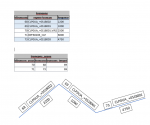Serge.potoczny
New member
- Local time
- Today, 01:49
- Joined
- Jun 2, 2020
- Messages
- 7
Bonjour, J'ai regardé avec attention votre proposition d’utilisation de l'algorithme Dijkstra, et je me demande si il est possible de la faire fonctionner différemment. Plutôt que de travailler avec des sommets + liens avec longueurs, serait -il possible d'utiliser une table de segments avec leur longueur et une table de lien.
si l'on fait un parallèle avec un itinéraire on retrouve les routes d'un point à un autre et pas le villes
Merci d'avance,
si l'on fait un parallèle avec un itinéraire on retrouve les routes d'un point à un autre et pas le villes
Merci d'avance,
Attachments
Last edited:


